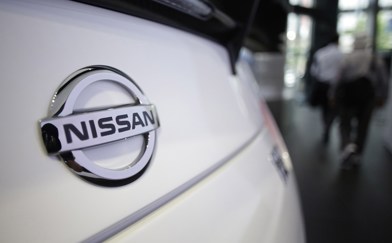A couple of headline figures for you: by 2028, Lotus plans to be selling 100,000 vehicles per year, and 90 per cent of those will be “lifestyle” (the company’s words, not ours) sedans and SUVs made in China.
We understand if you’ve immediately thrown up your hands in mock (or real) horror at the prospect of a future Lotus focused on zero-emissions family cars.
But consider this: Lotus made 1519 cars in 2021 and that was a really big year for the brand. Under its new “Vision 80” business and product plan, it’ll be making 10,000 sports cars per year.
The company is promising those will still be really great sports cars, as well.
“We’re trying to transform Lotus into a major premium brand: a core of sports cars complemented by a series of lifestyle products,” says Matt Windle (pictured above), managing director of Lotus Cars since Chinese group Geely purchased the brand in 2017 (it’s also the parent company of Volvo and Polestar).
View at Lotus models listed on DRIVEN
Windle visited New Zealand this month with senior members of his team to see the new distributorship (now under the Giltrap Group) - the first-ever Kiwi visit by a Lotus MD.
“It’s a well-trodden path, but people want SUVs now,” says Windle. “They want an opportunity for transporting their families around, not just sports cars.
“But it’s really important to us that Lotus in the UK will stay the home of sports cars. We’re doing the design there, we’re doing the engineering there, we’re doing the manufacture there.”
In fact, there’s clear and substantial demarcation between the sports and lifestyle models to come. The former are the products of Lotus Cars, while the latter come from a separate company called Lotus Technology.
There’s a Lotus Technology centre in the UK, but from next year the global headquarters of design and manufacturing for the lifestyle cars will be a new facility in Wuhan, China (“you might have heard of it,” says Windle). It can produce up to 150,000 cars per year – the minimum size allowed for a new automotive factory build in China.
Lotus has just launched the Emira (above), a new UK-built roadster that’s both the first and last of a line: first of Lotus’s new-gen models, yet also the last internal combustion engine (ICE) vehicle for the brand.
Emira has just arrived in NZ with the familiar 3.5-litre V6 engine, manual or automatic, at $177,000. Next year we’ll also see a $144,000 version powered by Mercedes-AMG’s feral 2.0-litre four-cylinder engine, with a dual-clutch transmission.
“We think it’s a supercar for sports car money,” says Windle.
Beyond that, it’s all electric. The Lotus Cars Evija hypercar (above) has endured endless delays over the past two years thanks to Covid-19, but the NZ$4m pure-electric road-rocket will go into production this year. Lotus says no more than 130 will be built and claims 0-300km/h in 9.1 seconds: “Close to F1 standards of acceleration,” says Windle.
Lotus Technology has already previewed the Eletre (below), which it calls a “hyper SUV” with advanced aerodynamics and a technology package that includes preparation for full Level 4 autonomous driving (where human control is totally optional) where/when infrastructure and the law permits.
There’s also clear product plan for the future, with a range of as-yet un-named models to come. The Lotus Technology Type 133 large sedan (think Tesla Model S) will be launched next year, then in 2024 a smaller SUV (Type 134).
There’ a real halo model coming for Lotus Cars in 2026: a pure-electric sports car, on a new platform that puts the battery pack in the middle to preserve a mid-engined feel. Light weight is also a classic Lotus KPI: Windle has told the engineering team the sports-BEV must be the same as Emira (1405kg in its current form).
“That’s a big challenge,” says Windle. “But they’re on track. They’ve saved 50kg in the rear suspension already, just by ‘lightweighting’, taking material out where it’s not needed.”
Windle knows a thing or two about electric sports cars: he was with Tesla from 2005, when it was a young company developing the first-generation Roadster. It was based on the Elise chassis and lots of development work was done at Lotus in the UK.
“It was a very small business and I worked with Elon [Musk] a lot,” says Windle. “It had a big impact on how I do business: quick decision making, not getting bogged down in meetings, always moving forward.”
There’s a third branch to Lotus which is almost as old as the brand itself – and has been arguably the most important element of the company for the longest time. Lotus Engineering works extensively with other carmakers, especially finessing ride and handling.
But BEV platform supply and development is where the future lies. The new mid-engined BEV chassis won’t just underpin a new Lotus sports car, it’ll be sold to other companies to use as the base for their own models – most likely with Lotus Engineering then coming in for the fine-tuning.
The mid-battery BEV chassis has already been sold to Alpine for its next sports car. The Eltre SUV platform is also part of a potential deal at the moment.
Windle says Lotus has a high degree of autonomy within the Geely group – even when it comes to technology sharing with Volvo/Polestar: “There is tech from our sister brands on Lotus vehicles, but we also work for them. We’re not directed by Geely – they see it as being there if you want it, but they don’t want to dilute the brand. That extends to IT and systems, too.”
Windle also says there’s not much crossover in battery tech between Lotus and Polestar; each do their own thing.
A vastly broader model range is the way forward for Lotus; it’s that or nothing.
“To be a diehard sports car maker is not a sustainable business model,” says Geoff Dowd, executive director of global sales and aftersales. “The scale is tiny for the technology you need to meet legislation.
“The Emira will satisfy that hard core enthusiast and our comeback to racing will do that as well [through yet another division, Lotus Advanced Performance]. We’re catering to that population, but at the same time if we’re going to be a proper car company and make a global impact we have to enter those new segments.
“The research basically says that in 2030, the EV business will be 60-70 per cent of global sales, 60 million units. The growing segments are in SUV, so if you’re going to get into the business you need to be in China, you need to be in the US, you need to be in SUVs and you need to be EV.
“That’s where the planning has to come from. The key thing is to make sure the brand remains the brand.”





